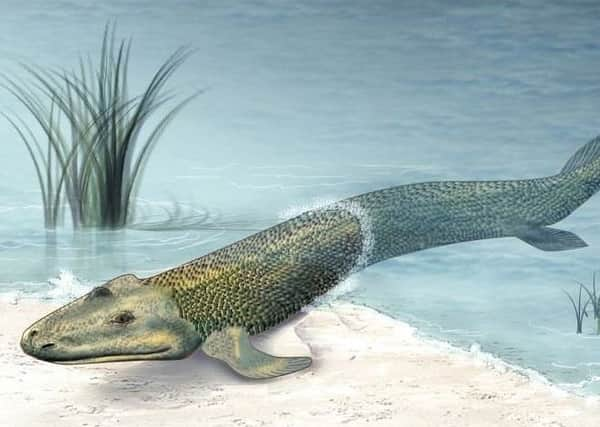Scotland holds key to earliest land walking life


In 2011, self-taught paleontologist the late Stan Wood discovered a series of rare fossils at a location named Willie’s Hole near the village of Chirnside in Berwickshire.
Wood’s fossils belonged to an early group of animals known as tetrapods - the first four-legged vertebrates on Earth.
Advertisement
Hide AdAdvertisement
Hide AdJust six months after his discovery, Wood, from Selkirk, who found what may be the world’s earliest reptile in a limestone quarry in West Lothian in 1984, died of cancer at the age of 72.
Last year, National Museums of Scotland and University Museum of Zoology Cambridge sent teams of excavators and researchers back to Chirnside to continue Stan Wood’s work.
In their study, Jennifer Clack and colleagues from Cambridge University describe five new and diverse species which date back approximately 360 million years - just before the time of the Devonian Period mass extinction.
The Chirnside fossils help to fill a 25 million year gap in the tetrapod fossil record, covering a key time in their evolution of which relatively little is known.
The team identified two of the species as early amphibians, and three as more distantly related early tetrapods, which suggests an early split between amphibians and amniotes (reptiles, birds and mammals).
Tetrapods from the late Devonian period, before the mass extinction, were fish-like with many digits. The fossils from after the period known as Romer’s Gap have fewer digits and more closely resemble today’s land vertebrates.
The reason for the apparent gap in the fossil record is not known, but it has been suggested that low oxygen levels limited the number and diversity of tetrapods.
Scotland has a long-standing track record of turning up some of the best pre-dinosaur archaeology sites on Earth.
Advertisement
Hide AdAdvertisement
Hide AdOne of the most famous was found in Dunbartonshire in 1971, when a specimen named Pederpes finneyae was unearthed from limestone deposits.
And in 2004, an ancient millipede fossil dating back 428 million years was dug up in Stonehaven.
Fragments of tetrapod fossils dating from the same era have been found elsewhere around the world, such as the USA, Canada and Australia, but the Berwickshire fossils represent some of the best preserved examples yet to be discovered.